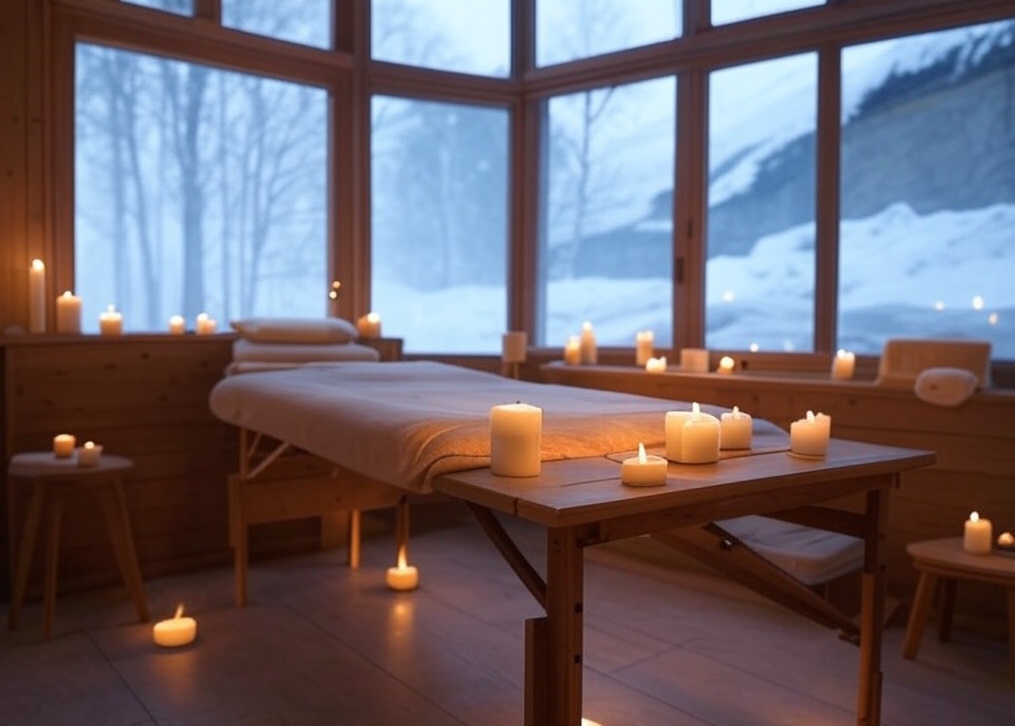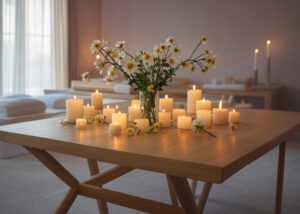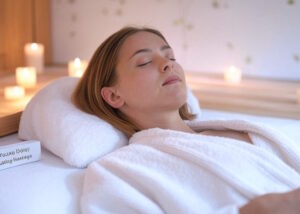Russian Karelia Spa – the unknown hidden gem when it comes to serene escapes
Looking for your next Winter-Wellness Adventure? The Russian Karelia region is truly a hidden gem when it comes to traditional wellness. This is the place where the ancient forests and the vast, clear lakes mix with air that smells of pine and fresh water. It’s a land steeped in history and folklore, perfect for unwinding and reconnecting with nature.

When we talk about wellness and spa havens in Russian Karelia, we’re really talking about places that embody that deep connection to nature and traditional Russian (and Karelian) wellness practices. Popular rustic banyas (the Russian equivalent of a sauna), peaceful forest walks, and fresh, local food.
Stepping into Russian Karelia is like stepping into a peaceful, fairytale landscape where the air just feels cleaner, and the connection to nature is profound. If you’re looking for wellness and spa experiences here, you’re not just finding a fancy hotel with a pool; you’re often finding places that weave in the deep-rooted traditions, the tranquility of the forest, and the invigorating spirit of the Russian Banya.
Let’s explore into some of the best spots for excellent, rejuvenating experience in this enchanting region
Martsialnye Vody (The Waters of Mars) – Russia’s Oldest Spa:
Visiting the spa founded by Peter the Great himself back in 1719! That’s Martsialnye Vody, about 50 km from Petrozavodsk. It’s famous for its healing mineral waters, iron-rich springs that you can actually drink, and sulfur-smelling mud treatments. People have been coming here for centuries for the therapeutic mud baths and the stunning natural surroundings. It’s not only about pampering; it’s about tapping into centuries of natural healing, with light sports activities to really boost that energy. It truly feels like a journey back in time, focused on holistic well-being.
SPA Hotel Karelia (Petrozavodsk):
Located right in the heart of Petrozavodsk, the capital of Karelia, this 4-star hotel offers modern, yet still serene, spa experience. It’s a fantastic option if you want comfort and convenience with your wellness. You can expect a well-equipped spa with an indoor pool, a hammam, and a sauna, perfect for unwinding after exploring the city or Lake Onego, which some rooms boast panoramic views of. They also offer various spa treatments and even have a restaurant serving traditional local cuisine. It’s a great blend of city convenience and spa tranquility.
Kivach Clinic (near Petrozavodsk):
This isn’t your typical “spa hotel” – it’s more of a high-end medical spa and health resort, focusing on deep body cleansing and revitalization. For over 25 years, Kivach has specialized in “detox” programs at a cellular level, aiming to boost immunity, reduce weight, and restore energy. They combine natural healing techniques with advanced medical diagnostics and therapies. Imagine fresh forest air, clean river water, a healthy diet, and a luxurious suite (some even with infrared saunas or traditional Russian banyas!). They offer “Parenie” – that invigorating leaf and steam treatment with oak, birch, or eucalyptus branches, followed by icy plunges – a true Russian banya ritual. This is for someone looking for a serious, science-backed wellness overhaul in a luxurious setting.
Sanatorium “White Springs” (Petrozavodsk):
Also in Petrozavodsk, this multidisciplinary medical and preventive resort focuses on health improvement and rehabilitation. It’s unique for being the only sanatorium right in the city, yet it’s nestled in a green area, just 700 meters from Lake Onega. They offer individual treatment programs, drawing on classic techniques like balneotherapy (baths), physiotherapy, mud therapy, and various massages. They even incorporate modern approaches like yoga therapy and Nordic walking. It’s a fantastic option for those seeking a more structured health-focused retreat combined with relaxation.
The Heart of Russian Karelia Wellness: The Banya Experience
Regardless of where you stay, a true Russian Karelian wellness journey isn’t complete without experiencing a traditional banya. Forget just a dry sauna; a banya is a steamy, humid affair, often heated by a wood-fired stove, where the air is thick with the scent of birch or oak branches (called veniks).
Parenie: This is the signature banya treatment. A banshchik (banya attendant) gently “massages” you with those veniks, sweeping hot steam onto your body, stimulating circulation and deep cleansing. It’s invigorating, followed by a shock of cold water (a plunge pool or even a dip in a snowy lake!).
Black vs. White Banyas: While most resort banyas are “white” (with a chimney), if you get a chance to try a “black banya” in a more rustic setting, it’s an experience! These have no chimney, and the smoke fills the room before venting, creating a unique, smoky heat. It’s very traditional and often incredibly effective for detox.
Russian Karelia has its unique approach to wellness – it’s about embracing the rugged beauty of the landscape, the warmth of traditional saunas, and the healing power of natural waters, all wrapped in a sense of ancient tradition and peaceful solitude.
Finnish and Russian Karelia, while sharing a historical and cultural heritage, offer distinct yet complementary spa and wellness experiences. The common thread uniting them is a deep connection to nature and a focus on traditional healing practices, particularly the revered sauna (or banya).
Common Characteristics Across Both Finnish & Russian Karelia Spas:
Nature Immersion: Spas are almost universally integrated into the natural landscape. They are often found on the shores of pristine lakes (like Lake Saimaa in Finland or Lake Onega in Russia), surrounded by vast forests. This allows for activities like forest bathing, ice swimming, or simply enjoying the views from within the spa.
Emphasis on Sauna/Banya Culture: This is the absolute cornerstone. You’ll find:
Traditional Wood-Heated Saunas/Banyas: These offer a deep, moist heat and are often seen as the most authentic experience.
Smoke Saunas (Savusauna / Black Banya): The oldest and perhaps most intense form, where smoke fills the room before venting, leaving a unique, earthy scent.
“Löyly” (Finnish) / “Parenie” (Russian): The practice of throwing water on hot stones to create steam, and in Russian Karelia, the invigorating whisking with birch or oak branches (veniks) is central to the banya ritual.
Cold Plunges: Essential for invigorating the body after heat, whether it’s a dip in a lake (even an ice hole in winter), a cold shower, or a dedicated plunge pool.
Focus on Relaxation & Well-being: The overall atmosphere is geared towards calming the mind and rejuvenating the body. It’s often about slowing down, disconnecting from daily stress, and embracing silence.
Natural Elements in Treatments: Many spas incorporate local natural resources like peat, forest herbs, or berries in their treatments.
Russian Karelia vs. Finnish Karelia Spa: Distinct Properties
Finnish Karelia Spas:
Finnish Karelia’s spas often blend modern comfort with traditional Finnish design and a strong accent on the clarity and health benefits of their nature.
Modern Spa Facilities with Nature Views:
Many prominent spas, like Break Sokos Hotel Bomba and Break Sokos Hotel Koli, offer contemporary spa complexes with various pools (hot, cold, experience showers), multiple saunas (Finnish, steam, infra-red), and relaxation areas, all designed to offer stunning views of the surrounding lakes and forests.
Architectural Integration:
Spas are often built with natural materials like wood and stone, in harmony with the landscape. Järvisydän’s Lake Spa is a prime example, being carved directly into natural rock.
Diverse Sauna Experiences:
Beyond the standard Finnish sauna, you’ll find specialized saunas like smoke saunas (often at separate, more traditional facilities), or even sauna yoga classes.
Cleanliness & Simplicity:
A hallmark of Finnish design and culture, spas are typically very clean, functional, and aesthetically pleasing, prioritizing a serene atmosphere over excessive opulence.
Family-Friendly Options:
Some larger resorts, like Holiday Club Saimaa, cater well to families, with extensive pool areas and activities alongside adult relaxation zones.
Russian Karelia Spas:
Russian Karelia’s spa scene often has a more historical and medicinal leaning, deeply rooted in the region’s unique natural resources and a sense of enduring tradition.
Historical & Healing Waters:
The most famous characteristic is the presence of ancient healing mineral springs. Martsialnye Vody (The Waters of Mars), Russia’s oldest spa, founded by Peter the Great in 1719, is a prime example. Its iron-rich mineral waters are known for their therapeutic properties.
Mud Treatments:
Therapeutic mud, often sulfur-smelling, is a significant part of the wellness menu, particularly at sanatoriums and older resorts like Martsialnye Vody.
Sanatorium Model:
Many facilities are structured as “sanatoriums,” centred on structured health improvement, rehabilitation, and preventative medicine, often with individualized treatment programs (e.g., Sanatorium “White Springs”).
Emphasis on “Banya” Rituals:
While Finnish saunas are about personal relaxation, Russian banyas often involve a more communal and ritualistic experience, with professionals (banshchiks) performing parenie for guests.
Shungite:
This unique black mineral, found almost exclusively in the Karelia region near Lake Onega, is often associated with wellness products. The scientific evidence for many of the health claims is limited, it’s a notable local element sometimes found in spa contexts or products in the region.
“Detox” & Revitalization Clinics:
Some high-end facilities, like Kivach Clinic, focus on body cleansing and revitalization programs, mixing advanced medical approaches with natural therapies.
In essence, Finnish Karelia offers a polished, modern, and often family-friendly spa experience, rooted in the Finnish sauna tradition and nature. Russian Karelia Wellness provides a more historic, medicinal, and ruggedly authentic wellness journey, unique mineral waters, mud therapies, and the ritual of the Russian banya.
The Health Benefits: Why the Russian Karelia wellness therapies are good for you
When we seek out prestigious, evidence-based sources for the health benefits of spa treatments in Russian Karelia, we can look at the components of Russian Karelian wellness (mineral waters, banya, mud therapy) and see what reputable science says about those:
Mineral Waters Martsialnye Vody:
Russian Karelia is home to Martsialnye Vody, famous for its iron-rich mineral springs. The benefits for our health are widely recognized in balneotherapy. Studies on mineral waters in general often point to benefits for cardiovascular health (e.g., lowering blood pressure, impacting cholesterol), digestive health (e.g., relieving constipation, improving gallbladder function), and providing essential minerals like calcium and magnesium.
WebMD provides a good overview of the health benefits of mineral water, citing various studies. While not specific to Martsialnye Vody itself, it explains the mechanisms. Source: Health Benefits of Mineral Water – WebMD . Academic Review: A review on ResearchGate also discusses the biochemical effects and health implications of drinking mineral waters, referencing various studies on their therapeutic actions. Source: (PDF) Drinking mineral waters: Biochemical effects and health implications – The state-of-the-art – ResearchGate
Russian Banya Steam Bath & Venik Rituals:
The Russian banya, with its high humidity and the use of veniks (birch/oak branches), offers distinct benefits. Research on saunas/steam baths generally supports several health claims.
Banya sessions can significantly impact cardiovascular health (improving blood circulation, strengthening the heart, normalizing blood pressure through temperature contrasts), boost the immune system (by increasing white blood cell production), aid muscle recovery (by eliminating lactic acid and improving circulation), detoxify the body through sweating, improve skin health, and reduce stress (lowering cortisol levels and releasing endorphins). Source: UCLA Health: Provides an excellent article on the “Benefits of sauna bathing for heart health,” which is highly relevant to banya given the similar heat stress and cardiovascular response. It cites research supporting heart health benefits. Link: Benefits of sauna bathing for heart health – UCLA Health
Article on a banya site, but citing mechanisms: Smartwellnessbanya.org offers a detailed breakdown of banya benefits, explaining physiological impacts on skin, cardiovascular, respiratory, musculoskeletal, nervous, and endocrine systems, and mentioning scientific research on memory and immunity. While part of a commercial site, the depth of explanation is useful. Source Link: What are the benefits of Russian banya | Smartwellnessbanya
Therapeutic Mud Pelotherapy:
Mud therapy is traditional treatment in many Russian sanatoriums, including those in Karelia. General mud therapy is reported to improve circulation, reduce stress, enhance joint function, boost the immune system, and promote easier breathing. It’s often used for musculoskeletal conditions, skin health, and detoxification. Sources: Reumatología Clínica (Spanish Medical Journal): A study on the “Effects of Mud Therapy on Perceived Pain and Quality of Life Related to Health in Patients With Knee Osteoarthritis” provides scientific evidence for mud therapy’s benefits in specific conditions. Not specific to Karelian mud, but illustrates the therapeutic potential. Link: Effects of Mud Therapy on Perceived Pain and Quality of Life Related to Health in Patients With Knee Osteoarthritis | Reumatología Clínica
IAMJ (Indian Ayurvedic Medical Journal): An article titled “The significance of mud therapy for maintaining health” (a PDF) discusses various benefits and applications of mud therapy, drawing from traditional and some modern perspectives. Source Link: Ghyan kanwar et al: The significance of mud therapy for maintaining health – IAMJ
Holistic Approach: Many of these treatments are part of a broader “sanatorium” culture which includes diet, exercise, and structured rest, contributing to the overall health outcomes. Individual Variation: As with any wellness treatment, individual results can vary.
These sources provide a trustful scientific and medical basis for the therapeutic effects of the types of treatments offered in Russian Karelia’s wellness spas, even if they aren’t always focused only on the Karelian region.






